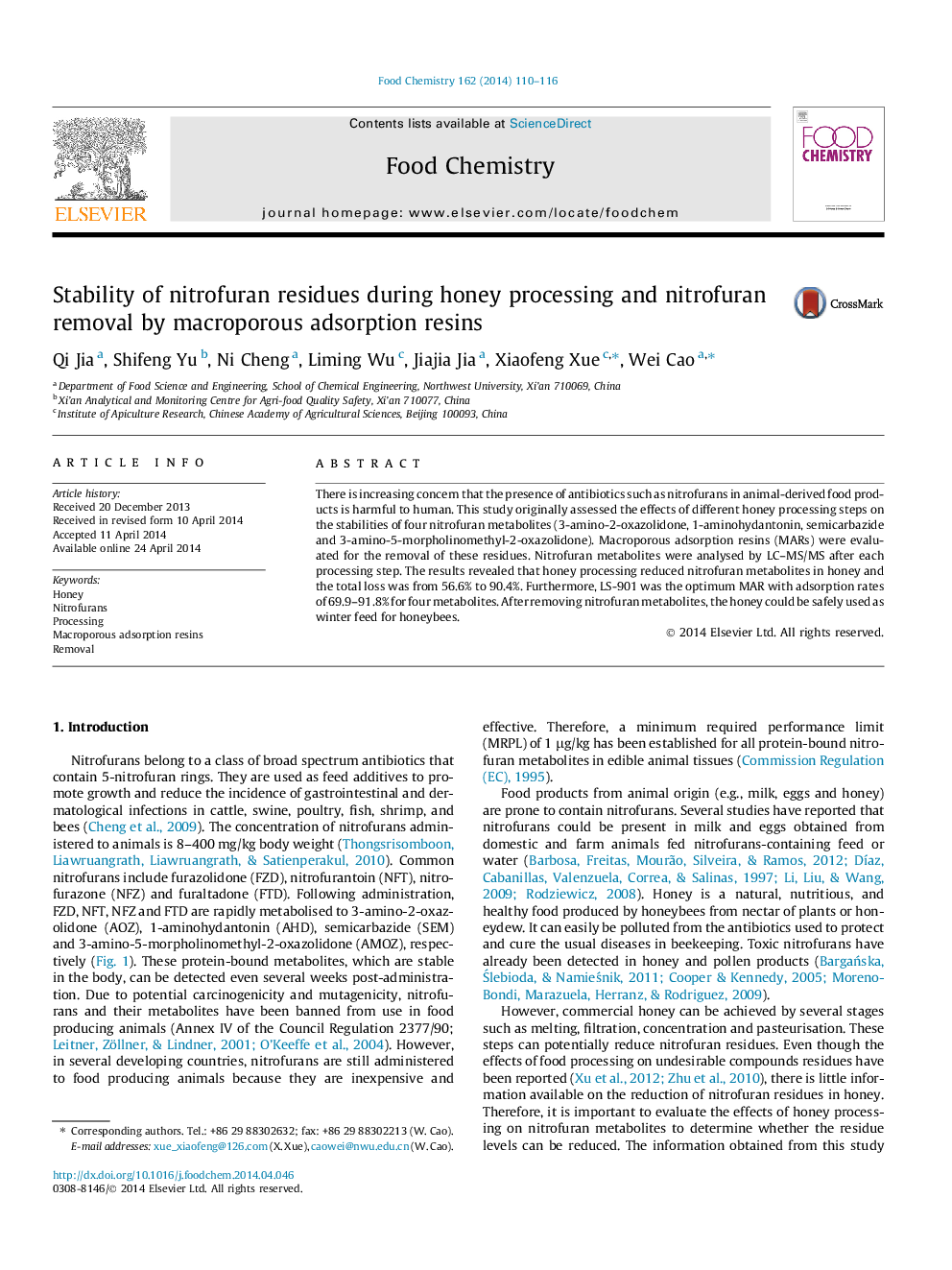| Article ID | Journal | Published Year | Pages | File Type |
|---|---|---|---|---|
| 1183860 | Food Chemistry | 2014 | 7 Pages |
•We studied the effects of honey processing on nitrofuran levels.•We described an environment-friendly method that can remove nitrofurans from honey.•LS-901 resin was selected as the optimal resin for removing nitrofurans from honey.•Resin-treated honey can be safely used as winter feed for honeybees.
There is increasing concern that the presence of antibiotics such as nitrofurans in animal-derived food products is harmful to human. This study originally assessed the effects of different honey processing steps on the stabilities of four nitrofuran metabolites (3-amino-2-oxazolidone, 1-aminohydantonin, semicarbazide and 3-amino-5-morpholinomethyl-2-oxazolidone). Macroporous adsorption resins (MARs) were evaluated for the removal of these residues. Nitrofuran metabolites were analysed by LC–MS/MS after each processing step. The results revealed that honey processing reduced nitrofuran metabolites in honey and the total loss was from 56.6% to 90.4%. Furthermore, LS-901 was the optimum MAR with adsorption rates of 69.9–91.8% for four metabolites. After removing nitrofuran metabolites, the honey could be safely used as winter feed for honeybees.
